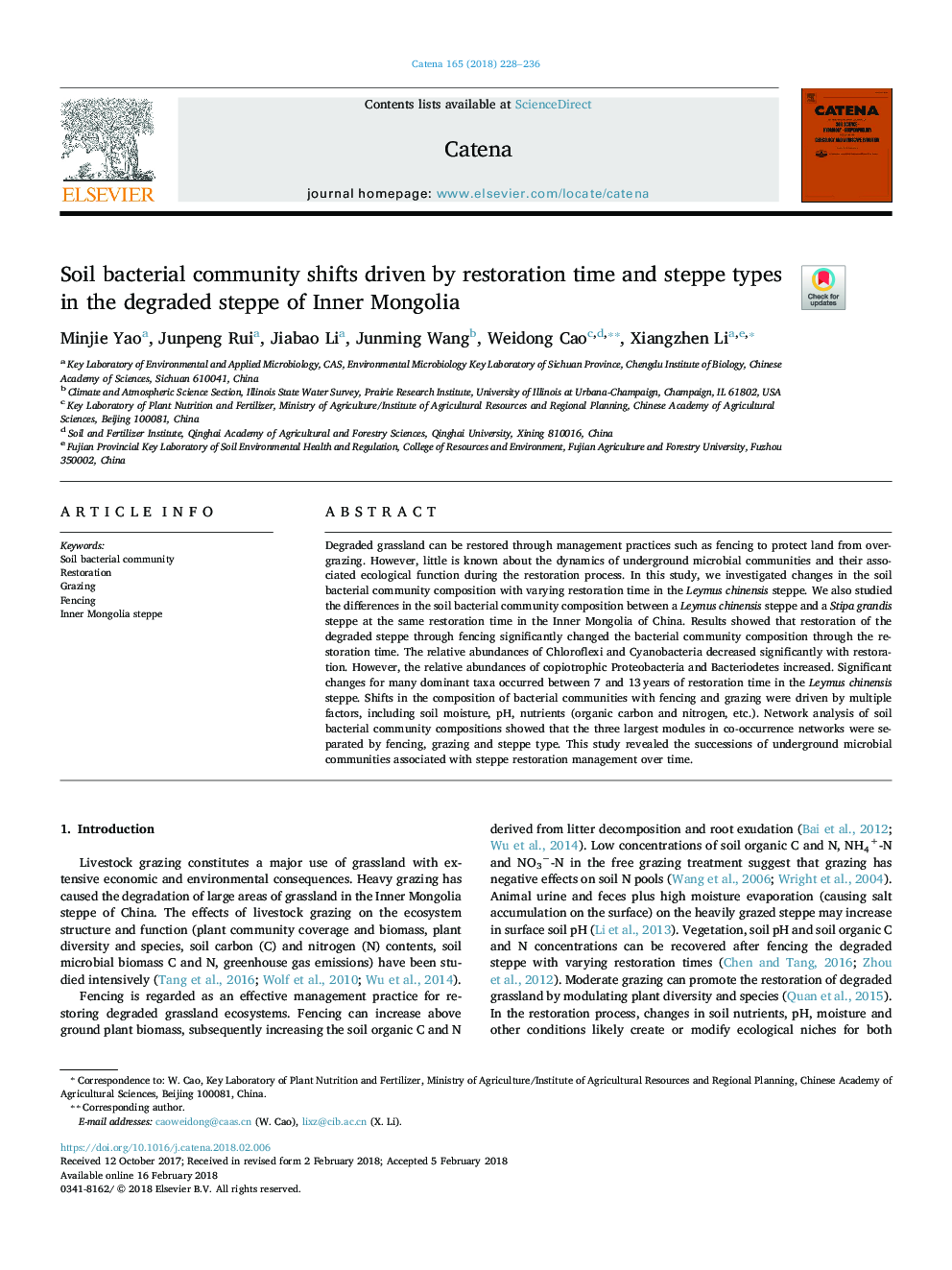| Article ID | Journal | Published Year | Pages | File Type |
|---|---|---|---|---|
| 8893592 | CATENA | 2018 | 9 Pages |
Abstract
Degraded grassland can be restored through management practices such as fencing to protect land from overgrazing. However, little is known about the dynamics of underground microbial communities and their associated ecological function during the restoration process. In this study, we investigated changes in the soil bacterial community composition with varying restoration time in the Leymus chinensis steppe. We also studied the differences in the soil bacterial community composition between a Leymus chinensis steppe and a Stipa grandis steppe at the same restoration time in the Inner Mongolia of China. Results showed that restoration of the degraded steppe through fencing significantly changed the bacterial community composition through the restoration time. The relative abundances of Chloroflexi and Cyanobacteria decreased significantly with restoration. However, the relative abundances of copiotrophic Proteobacteria and Bacteriodetes increased. Significant changes for many dominant taxa occurred between 7 and 13â¯years of restoration time in the Leymus chinensis steppe. Shifts in the composition of bacterial communities with fencing and grazing were driven by multiple factors, including soil moisture, pH, nutrients (organic carbon and nitrogen, etc.). Network analysis of soil bacterial community compositions showed that the three largest modules in co-occurrence networks were separated by fencing, grazing and steppe type. This study revealed the successions of underground microbial communities associated with steppe restoration management over time.
Related Topics
Physical Sciences and Engineering
Earth and Planetary Sciences
Earth-Surface Processes
Authors
Minjie Yao, Junpeng Rui, Jiabao Li, Junming Wang, Weidong Cao, Xiangzhen Li,
